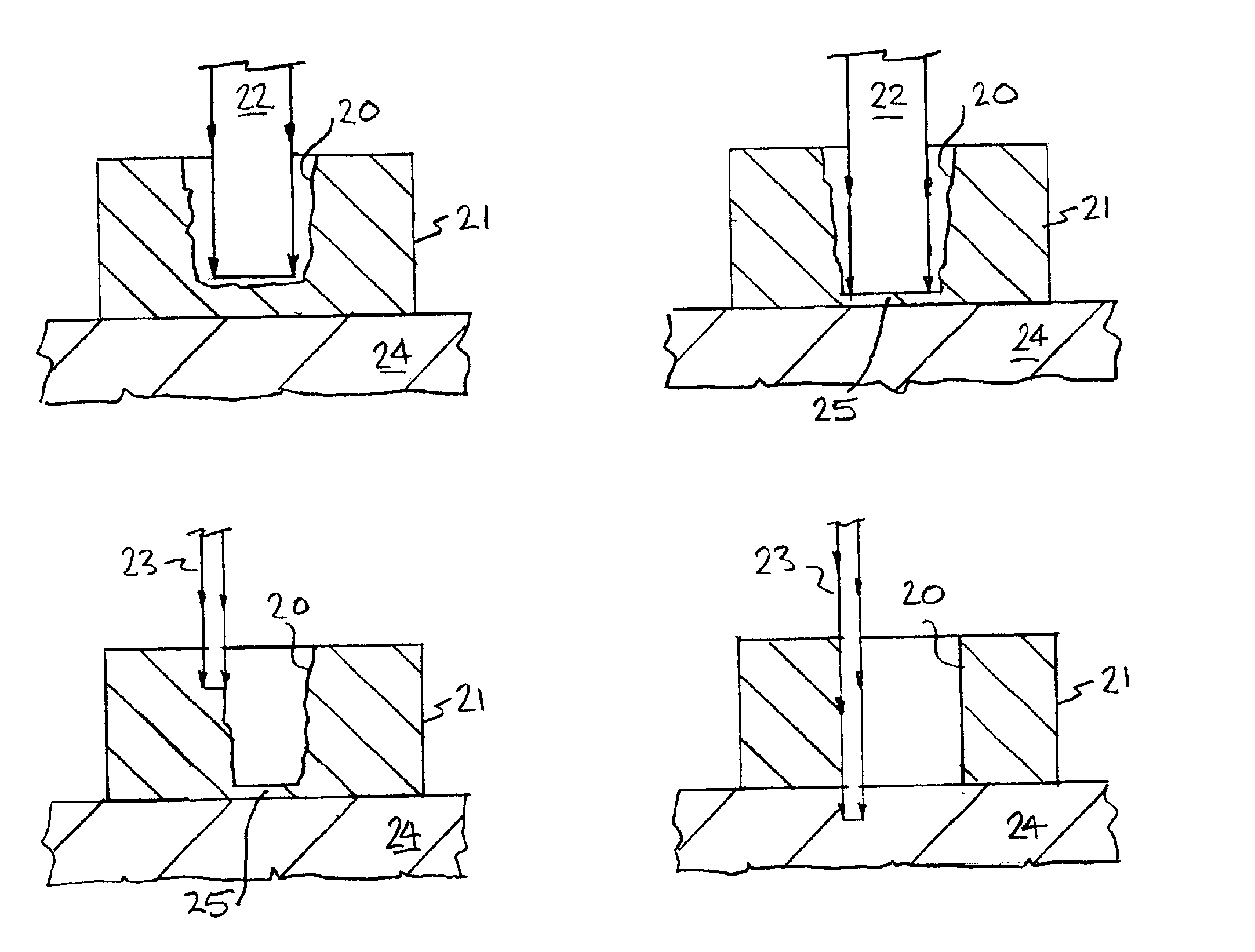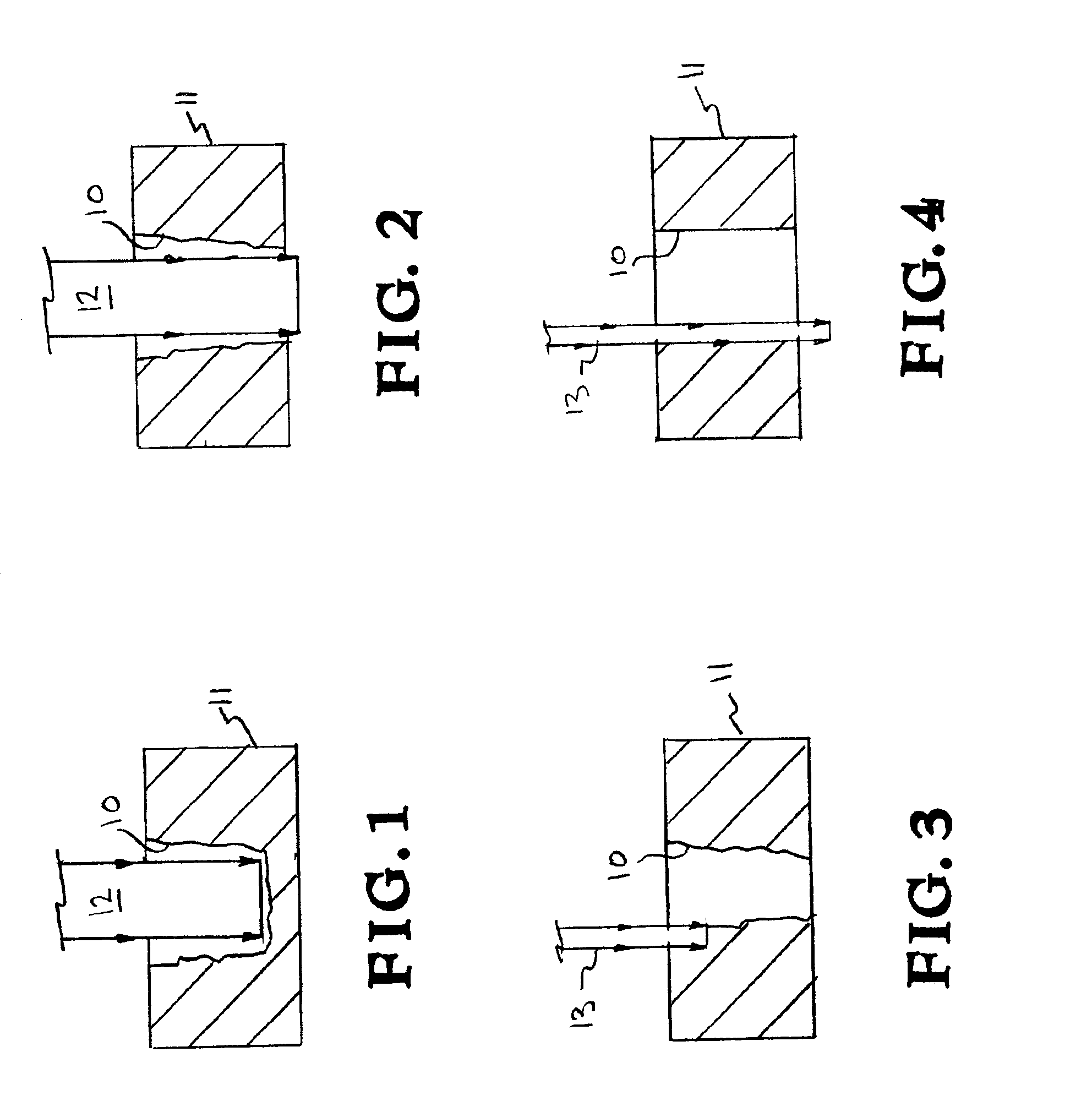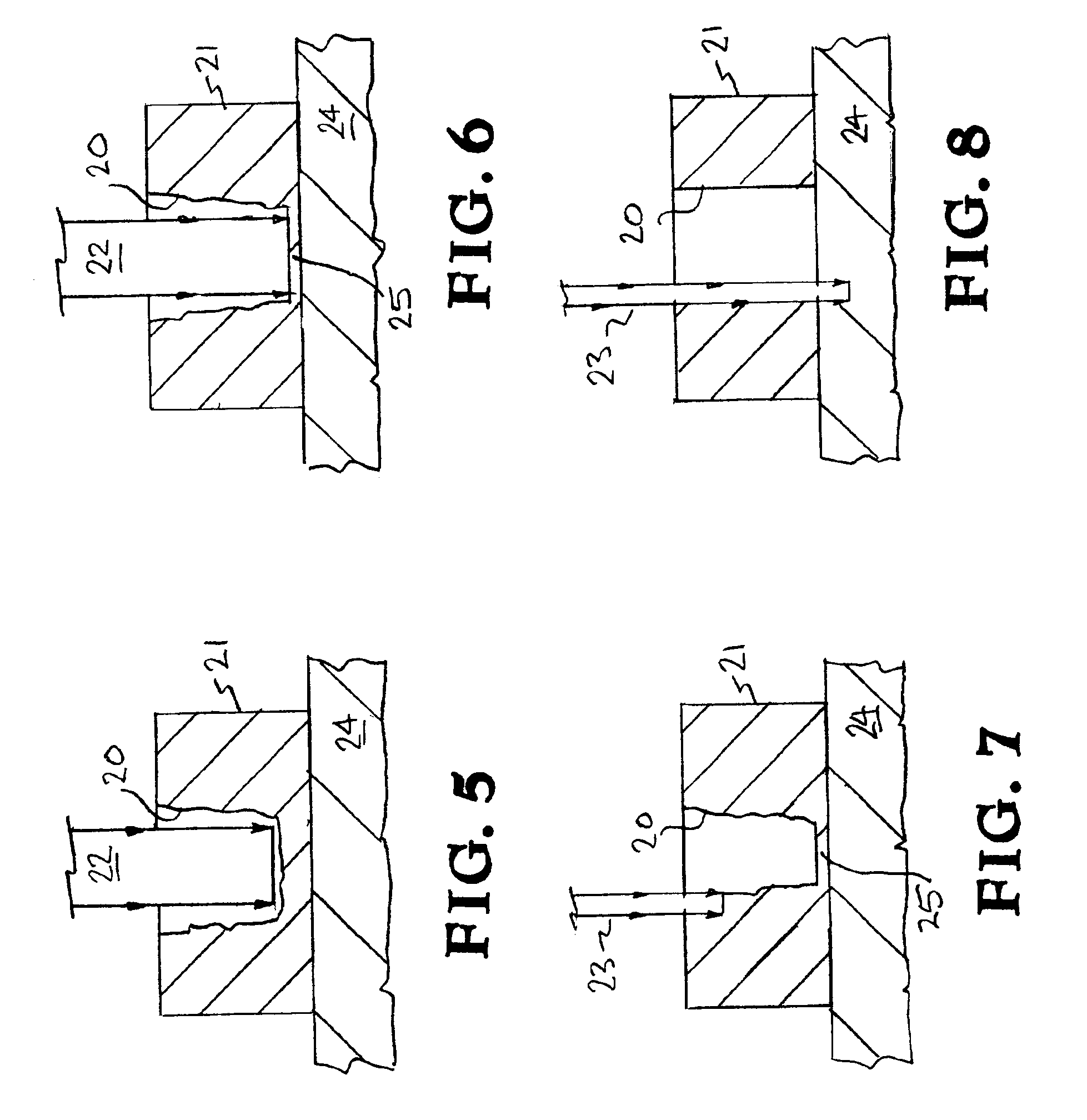High precision, rapid laser hole drilling
a laser hole, high-precision technology, applied in the field of laser hole drilling, can solve the problems of low drilling speed, long drilling time, low material removal rate, etc., and achieve the effect of high precision
- Summary
- Abstract
- Description
- Claims
- Application Information
AI Technical Summary
Benefits of technology
Problems solved by technology
Method used
Image
Examples
Embodiment Construction
Referring now to the drawings, specific embodiments of the invention are shown. The detailed description of the specific embodiments, together with the general description of the invention, serve to explain the principles of the invention. The present invention provides a system for drilling holes in a material. A laser system produces a first laser beam for rapidly removing the bulk of material in an area to form a ragged hole. The hole is “ragged” in the sense that some material ablated from the bottom of the hole condenses on the sides of the hole. It is this recast layer which gives the hole its ragged appearance. The laser system produces a second laser beam for accurately cleaning up the ragged hole so that the final hole has dimensions of high precision.
In an embodiment of the invention the first laser is a high power infrared laser with moderate beam quality, on the order of 10 times the diffraction limit. The infrared laser is focused to a diameter slightly smaller than the...
PUM
| Property | Measurement | Unit |
|---|---|---|
| temperature | aaaaa | aaaaa |
| diameter | aaaaa | aaaaa |
| diameter | aaaaa | aaaaa |
Abstract
Description
Claims
Application Information
 Login to View More
Login to View More - R&D
- Intellectual Property
- Life Sciences
- Materials
- Tech Scout
- Unparalleled Data Quality
- Higher Quality Content
- 60% Fewer Hallucinations
Browse by: Latest US Patents, China's latest patents, Technical Efficacy Thesaurus, Application Domain, Technology Topic, Popular Technical Reports.
© 2025 PatSnap. All rights reserved.Legal|Privacy policy|Modern Slavery Act Transparency Statement|Sitemap|About US| Contact US: help@patsnap.com



